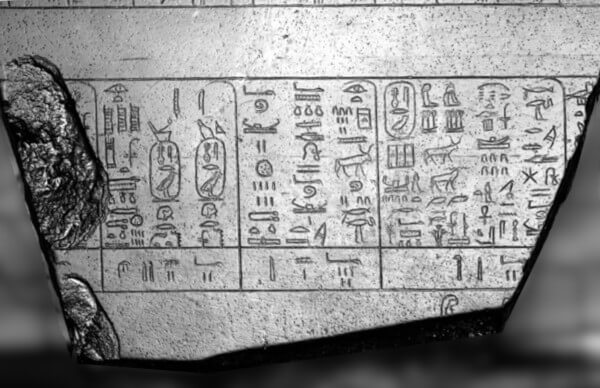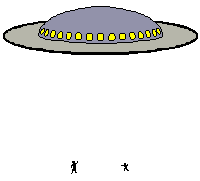Have you ever heard of the Palermo Stone? What is it? Why is it important? What mysteries does it still conceal? Why, even though it is kept in the Museo Archeologico Regionale ‘Antonio Salinas’ in Palermo, is it so unknown to the majority of Palermo’s inhabitants?
We will now try to answer these questions. Follow us…
What is the Palermo Stone?
The Palermo Stone is a set of several pieces of a large black basalt slab written in hieroglyphics on both sides: practically the oldest example of a ‘royal annal’ known today. It contains the names of the pharaohs of the first five dynasties (from around 3200 to 2350 BC), the main historical events that took place during the years of their reign and other very important information about Egyptian civilization.
The find preserved in Palermo is the largest and best preserved of the seven fragments identified so far and for this reason, each individual piece is referred to as a ‘Palermo Stone’ regardless of where it is currently stored (five are in the Egyptian Museum in Cairo and one in the Petrie Museum in London). The Palermo fragment measures approximately 43 cm high, 25 cm wide and 6.5 cm thick. According to archaeologists, the piece should belong to a much larger slab, about 2 meters wide and 60-100 cm high, and is ‘written’ in hieroglyphic on both sides, a unique case of its kind, with rather small characters that are now so worn that they are difficult to read, especially on the back face.



How to Read the Palermo Stone
For the reading and interpretation of the Palermo Stone we must give credit to Egyptologist Massimiliano Nuzzolo (Charles IV University in Prague) who, together with Kathryn Piquette and Mohamed Osman, are studying the find as never before. In addition to traditional and modern systems of archaeological research, the three scholars have relied on a special photographic technique to obtain legible images of the now faded signs: RTI (Reflectance Transformation Imaging), which consists of taking very high resolution photos by varying the source and angles of the light.
The inscription is divided into bands. The first, at the top, describes only a list of 15 predynastic pharaohs, without any other indication: they probably referred to such an ancient period that the scribe had no other information about them. Then a series of rows, divided by bands, list all kings from the 1st to the 4th dynasty.
Each row is divided into years by a sign similar to an inverted ‘f’, since Egyptian writing goes from right to left. In the bands separating the rows, the names of the rulers and their royal mothers are noted. For each year, at the bottom is the level of the Nile at flood level while inside the compartment the most salient episodes are marked up to the indication of the calendar year in which the king died. Following the ‘reading’ from top to bottom and then to the rear, it can be seen that the boxes increase in size as the facts reported become more and more numerous. This is understandable because time limits the memories to more salient facts while the recent past and the present have imprinted the scribe with more vivid events.
Why is the Palermo Stone so important?
The importance of the Palermo Stone is due to the valuable information that the monument conveys to us from the ancient Egyptian civilization. It is more than 4,000 years old and provides detailed historical information about the first 700 years of Egyptian life – a real treasure trove for Egyptologists!
In addition to the chronology of the first five Egyptian dynasties (up to around 2,350 BC), there is information on the main religious celebrations, the construction of temples and monuments; details of trade, the main agricultural activities and information on cattle breeding… in short, a precise account not only of royal life, but also of the economy and daily life.
Now, bearing in mind that there is no archaeological evidence for much of this information, one can understand the importance of these discoveries. Certainly a lot of information will be inaccurate, amplified by myths and legends, but most of it has allowed Egyptologists to have unpublished information, such as the existence of a temple dedicated to the Sun God and not yet discovered, the so-called “Fields of RA”.
The Palermo Stone and its unresolved mysteries
Every archaeological find is shrouded in numerous unknowns that scholars try to solve using all the means that science makes available to them. The same applies to the Palermo Stone, which was donated to the Regional Museum, then directed by Antonio Salinas, in 1877 by the lawyer and collector Ferdinando Gaudiano. How he got it, however, is not known to us. After about twenty years of little interest, the Stone began to be studied in depth by the German Egyptologist Johan Heinrich Schäfer in the early 1900s.
We do not know the route that brought the Stone to Palermo but it is a greater mystery to find the place where the stele was originally placed. One of the seven fragments was found in the archaeological area of Memphis (the other six pieces come from the antiquarian markets that have flourished since the end of the 19th century): so a likely hypothesis is that the stele was located in a temple, either in Memphis or Heliopolis, both cities in Lower Egypt. But we do not know where it was placed or when and why it was destroyed.
Another mystery still unsolved is what this document actually was, what it was intended for. First we have to imagine it as a stele erected somewhere, so that it is visible from both sides. And already this is unusual because memorial stelae were normally hung or walled in the temple. Moreover, the hieroglyphic characters are so small that they are difficult to read, so it is possible that it was rather a copy of a document transcribed on papyrus, a copy so important that it used a material so difficult to carve, but therefore particularly durable and long-lasting. A suggestive hypothesis is that the same document was ‘written’ in several copies by the priests, not so much to hand down the deeds of the pharaohs as the chronology of important events to be remembered forever.
And that’s not all, there is still much to be discovered, starting with the deciphering and translation of the hieroglyphs that have yet to be interpreted.
Promoting the Palermo Stone: but how?
We have seen how precious this artifact is and yet few people know about it, mostly scholars, archaeologists and Egyptologists: very few are from Palermo. But why? When I visited the British Museum in London, there was a crowd of spectators around the “Rosetta Stone”; at the Salinas Museum in Palermo, in front of the case that holds the Palermo Stone, there was no one. Now, from a strictly material point of view there is little difference between the two finds: both are two black basalt stones, the larger Rosetta stone bears three small bands of writing, the Palermo stone we have seen. The value therefore lies in what they represent. The Rosetta Stone is extremely important because it has allowed us to interpret hieroglyphics, but so is the Palermo Stone, because of the important information, much of it previously unpublished, about Egyptian civilization. If we think that the first one dates back to 196 BC and the second one more than 2000 years earlier!

What makes the Rosetta Stone famous is its knowledge: we have all heard of it, we have all found it mentioned in history and architecture books. Nothing about the Palermo Stone. Only insiders are interested in it.
So what can be done to enhance the value of this find? Spread knowledge about it. Starting with its barely visible location: in a room together with other varied exhibits, inside a glass case that is too reflective, only the front face can be seen, and then no detailed explanation, except for the usual accompanying texts. More could be done, dedicating spaces and exhibitions, guided tours, detailed explanations for schoolchildren, animated videos, reconstructions and everything else that could be useful to increase the knowledge of this monument and the prestige of owning it in our city.
We are the change the world has been waiting for!
Have you witnessed an unidentified flying object?
Whether you think UFOs are black projects, extraterrestrial craft, something else altogether, or just don’t know.
Unconditional love. The road we all get to walk. Unconditional love is like the sun.
WE ARE THE DISCLOSURE ~ WE HAVE NEVER BEEN ALONE
Love and Regards,
Thank You,
Nancy Thames
Source: Saverio Schirò


